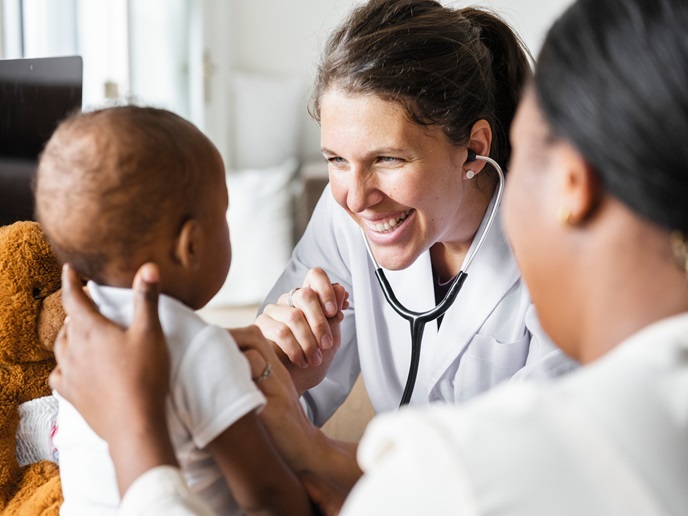Collaboration: a shot in the arm for rare diseases
Rare diseases are often diagnosed in childhood. As many are life-threatening and debilitating, the effects can be profound. While estimated to affect no more than 1 in 2 000 people directly(opens in new window), this still equates to around 300 million people globally. “Doctors might only ever encounter one rare disease in their career,” says Daria Julkowska from France’s National Institute of Health and Medical Research(opens in new window). “Diagnosis takes around five years on average, and 95 % of diseases have no treatment. To turn things around, we need to urgently enrich our critical mass of knowledge.”
A unique partnership driving change
The ERDERA(opens in new window) program, co-funded by the EU and counting 180 partners from 37 countries, was set up to accelerate diagnosis (to within six months of coming to medical attention), increase the range and availability of therapies, and measure individual and social impact to inform policy. Sharing data on rare diseases is critical given how little is known. U.S. involvement will ensure that lessons learned and knowledge gained can be implemented on both sides of the Atlantic. To reach its goals, ERDERA runs annual funding calls for treatments (each worth from EUR 20-30 million in investment), complemented by support for phase I and II multinational clinical trials. Furthermore, while ERDERA’s research network comprises 180 organizations including funding bodies, research institutes and ministries, it also uniquely includes patient organizations, research infrastructures, industry and SMEs. “There is no other partnership as diverse as ERDERA, which aims to become self-sustaining,” adds Julkowska, its scientific coordinator.
A model of transatlantic cooperation
When it comes to ensuring successful international collaboration, Julkowska cites the International Rare Diseases Research Consortium’s(opens in new window) (IRDiRC) think tank approach as being instructive. Jointly established in 2011 by the European Commission and the U.S. National Institutes of Health, the IRDiRC is chaired by a U.S. representative with EU co-leadership. Three constituent committees of funders, industry and patients, are complemented by four research committees: therapies, interdisciplinary, diagnostics and regulatory. All committees work through task forces, guided by an annual roadmap to advance the global strategy. The IRDiRC Scientific Secretariat is now hosted and supported by ERDERA. “ERDERA is similarly building a sustainable rare disease research ecosystem,” notes Julkowska. “Through shared expertise and cutting-edge infrastructure, we are advancing science and forging a future where faster diagnosis, better treatments and coordinated care become the norm. In the U.S. we see successful treatments coming from academia, industry and regulators joining forces, as exemplified by one of ERDERA’s partners – the U.S.-based Critical Path Institute(opens in new window).”
Advancing rare diseases research together
A key ERDERA priority is the ‘empowerment of data’ for basic, translational and clinical research. In practice this means demonstrating how electronic health records and real-world data can drive, or support, the development of patient-centered outcome measures and their value to regulatory bodies. Another priority is to improve the current research paradigm by providing support along the research pipeline, involving a wide array of stakeholders earlier. Indeed, ERDERA’s predecessor, EJPRD(opens in new window), had previously collaborated with the Critical Path Institute (C-PATH) in the development of regulatory strategies, delivering proofs of concept on the reuse of registries’ data and expanding treatment use cases. “Working with C-PATH again has boosted our capacity to align academia, industry and regulators, while we also benefit from other American strengths like longer-term strategies and exploring commercial considerations,” explains Julkowska. “These really complement the EU’s focus on scientific excellence and building research infrastructures.” A case in point is ERDERA’s in-house advanced therapy medicinal products (ATMPs) technology accelerator (developed with the support of several transatlantic industry partners), inspired by the innovative approach of the U.S.-based Bespoke Gene Therapy Consortium(opens in new window) (BGTC) to speed up the availability and affordability of technologies. Working with patient groups to identify which rare diseases would most benefit from treatment options, ERDERA will support the preclinical proofs of concept for specific ATMP technologies, as a precursor to clinical trials.



